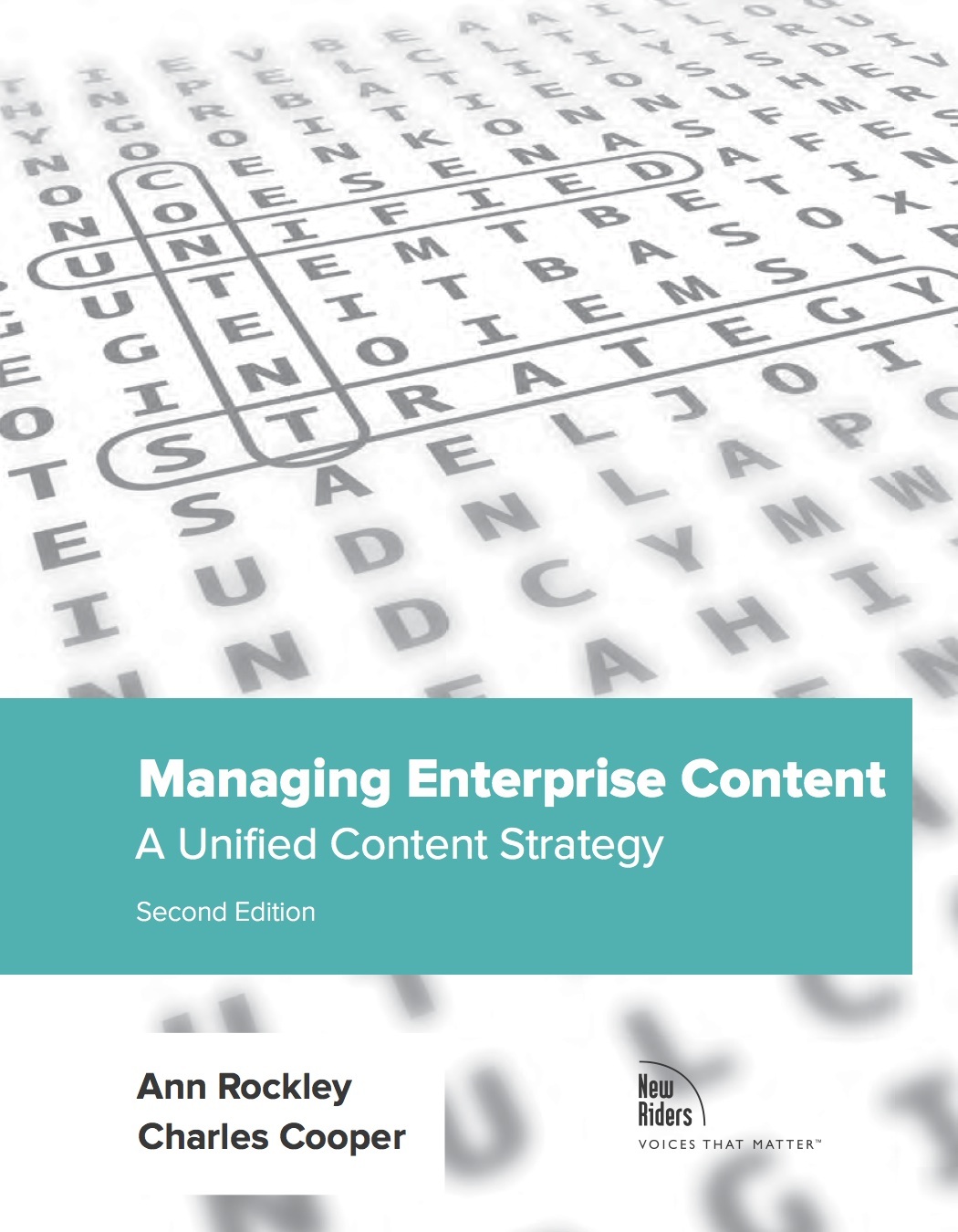WHAT IS INTELLIGENT CONTENT?
By Ann Rockley, President, The Rockley Group Smartphones, tablets, laptops, desktops (remember those?), phablets, hybrids, convertibles … Who can keep up?
Smartphones, tablets, laptops, desktops (remember those?), phablets, hybrids, convertibles … Who can keep up?
If your company is like most, you have content -- lots of it. But, chances are, your content is straitjacketed in formats that don’t allow you to easily publish to all the latest devices and channels; preventing you from connecting your content to your customers.
You may be the best in your business and have exactly the products or services that prospective customers are looking for, but those prospects will go elsewhere if they can’t get the information they want, when and how they want it. You can no longer afford to handcraft content for individual customers, device types, or channels. If you still follow that traditional strategy, you're locking up your content in old formats and technologies—and locking out new markets.
How do you unlock the potential of your content? Make it intelligent!
Intelligent content is structurally rich and semantically categorized and therefore automatically discoverable, reusable, reconfigurable, and adaptable.
What does all that mean? Read on.
INTELLIGENT CONTENT IS STRUCTURALLY RICH
To make your content intelligent (and make it possible for systems to process it automatically) you need to remove formatting (look and feel) from source files and add structure: predetermined organizational patterns supported by metadata tags. Without structured content, it is almost impossible to automate content assembly and delivery processes. Content in one format cannot be automatically converted to another.
Structure, ironically, makes content flexible. Structure content can be easily mapped to styles appropriate to various output channels (for example, one style for desktop displays, another for mobile phone screens).
Structurally rich content offers a number of benefits:
-
Reduced costs: Structured content is less costly to create, manage, and deliver. Authors spend less time creating content, and reviewers spend less time reviewing content. Costs of electronic publishing can be virtually eliminated, and the costs of adapting your content for multiple devices can be significantly reduced.
-
Speed: It’s faster to create content when authors have a pattern to follow. Patterns take a lot of the guesswork out of determining what content to include. Structure guides the author in creating the appropriate content.
-
Reuse: Properly structured content ensures that reusable components are truly reusable, that their reuse is transparent, and that all content, whether reused or not, appears unified.
-
Predictability: Predictability drives consistency. Predictability is critical for automating delivery. It’s easier to create stylesheets and automated processing instructions for controlled structures than for ad hoc structures.
INTELLIGENT CONTENT IS SEMANTICALLY CATEGORIZED
Semantic means relating to meaning or logic. Semantically categorized content is content that has been labelled in a meaningful (vs. cosmetic) way. Semantic metadata adds meaningful additional information to content. For example, using semantically categorized content you can retrieve content about a particular product even if the product is never mentioned in the content.
Semantic metadata can give sophisticated behind-the-scenes clues as to how information might be mixed and matched, combined and recombined, supporting the automatic building of customized information sets.
Semantic metadata can give sophisticated behind-the-scenes clues as to how information might be mixed and matched, combined and recombined, supporting the automatic building of customized information sets.
INTELLIGENT CONTENT IS AUTOMATICALLY DISCOVERABLE
INTELLIGENT CONTENT IS AUTOMATICALLY REUSABLE
-
Reduced development, review, and maintenance: Development costs are reduced because the amount of content an author has to create is reduced, and there is less content to review. When content is reused, it can be updated automatically everywhere that particular content appears. And if you want to update only certain content but not other content, a smart content management system (CMS) makes it possible to selectively update content. -
-
Increased consistency and quality: When content is written once and reused many times (also known as single sourcing), the content remains the same each time. When there’s no reuse, inconsistency creeps in, either because people rewrite the content for various uses or because people copy and paste the content in various places and then, when updates come along, some of those places don't get updated.
INTELLIGENT CONTENT IS AUTOMATICALLY RECONFIGURABLE
INTELLIGENT CONTENT IS AUTOMATICALLY ADAPTABLE
INTELLIGENT CONTENT MEETS NEEDS TODAY — AND TOMORROW
Want to learn more about the ways that intelligent content enables organizations to grow and adapt to the rapidly changing needs of their customers? See our book, Managing Enterprise Content: A Unified Content Strategy, now in its second edition.
ABOUT THE AUTHOR
 Ann Rockley is President of The Rockley Group
and co-producer of theIntelligent Content Conference. Rockley has an international reputation for developing intelligent content
management strategies and underlying information architecture. She
is a frequent contributor to trade and industry publications and a
keynote speaker at numerous conferences
Ann Rockley is President of The Rockley Group
and co-producer of theIntelligent Content Conference. Rockley has an international reputation for developing intelligent content
management strategies and underlying information architecture. She
is a frequent contributor to trade and industry publications and a
keynote speaker at numerous conferences in North America and Europe.
in North America and Europe.
Rockley is known as a “luminary” in the content management industry. Dubbed the "mother of content strategy", Rockley has been instrumental in establishing the field of online documentation, single-sourcing (content reuse), unified content strategies, content management best practices, and intelligent content.
Rockley is the author of several best-selling books about intelligent content, including Managing Enterprise Content: A Unified Content Strategy(Second Edition, 2012, New Riders;sample chapter available) andDITA 101: Fundamentals of DITA for Authors and Managers (2012, Rockley Publishing).




